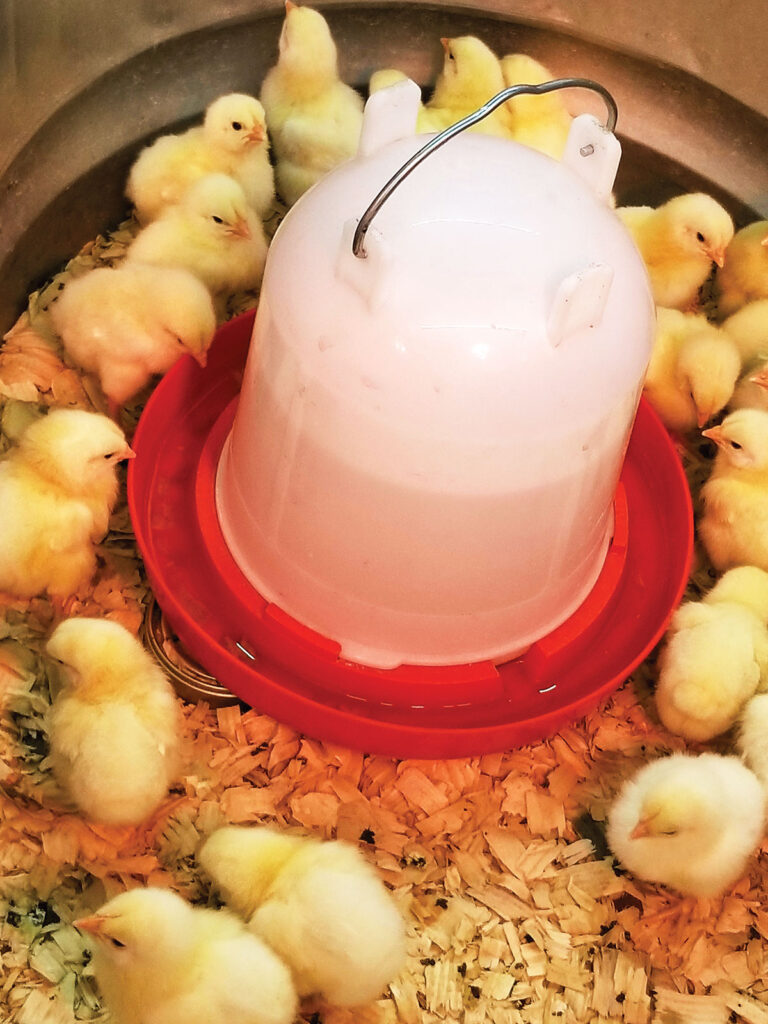
Considerations and plans needed prior to buying chicks
‘Tis the season for adorable, fluffy chicks to be for sale at farm supply stores. The current price of eggs makes the thought of caring for a small flock even more appealing to many folks. However, there are some things to keep in mind before taking the leap into raising chickens.
Patience: Though most aspects of farming require patience, poultry experts say some people are surprised how long they must wait for their chicks to mature and lay eggs. “A lot of people get chicks in the spring, and they get halfway through the summer, and they say, ‘Why are these chicks not laying eggs, they look so big?’ It’s because they are still not old enough,” Tatijana Fisher, PhD, Missouri poultry specialist and Lincoln University assistant professor, said. Most chickens are 5 or 6 months old before they start to lay eggs.
Considerations: First, it is important to plan for the chicks care from the time they are little through maturity. “They are a live animal, and they require care 365 days out of the year,” Fisher explained. “You have to have a plan; for example, if you have to go on vacation. Don’t underestimate that they are a living animal that needs care.”
In addition, checking local ordinances, HOA requirements, and county codes to make sure chickens are allowed is an important step. This is particularly true for people living within city limits or in a neighbor with a HOA association.
Everything Loves Chickens: Another consideration is the vast number of predators. “Everything in the world loves to eat chickens – everything,” Fisher said. Foxes, skunks, raccoons, opossums, dogs, coyotes, snakes, and that’s just to name a few. Additionally, free ranging chickens are vulnerable to aerial predators such as hawks. Poultry specialists recommend designing and building a coop that will protect the birds during the day and especially at night.
Plan Ahead: The cute fuzzy chicks can pull at the heart strings, but poultry specialists reiterate the importance of thinking through the decision prior to purchasing chicks. “I do recommend that people plan and not impulse buy chicks,” Fisher shared. “I always recommend planning ahead because they grow up faster than you think.”
The plan should include determining where the chicks are going to be housed in the short-term and long-term. The chicks become very dusty if they are kept inside for a long period of time. It’s important to plan and build a coop, so it’s ready when the chicks are big enough to transition to a coop.
Purchasing Chicks: There are a lot of heritage breeds that will work well in backyard flocks such as Rhode Island Reds, Barred Rocks and Orpingtons. There is no need to stick with just one breed, owning several breeds has its advantages. “When you have them from different breeds it is easier to tell when something is wrong and keep track of it, than if they are all the same,” Dr. Fisher added.
If raising laying hens is the goal, make sure to purchase female chicks or pullets (young female chicks). Though buying a straight run may be less expensive, the chicks are picked up exactly as they hatch. Therefore, a straight run typically contains 50 percent hens and 50 percent roosters. Hens do not need a rooster to lay eggs. So, if egg production is the ultimate goal, select all females from the start.
Chicks possess a unique feature that allows them to be shipped from hatcheries within 24 hours of hatching. Their anatomy allows them to survive without food or water for the first 48 to 72 hours. “At the very end of their incubation, the last thing they do is draw the last bit of yolk that they have been feeding on into their abdomen,” Fisher explained. “They have a yolk sack in their abdomen that will last two to three days before they have to eat or drink.” As soon as the chicks arrive at their destination, they will need food and water.






